



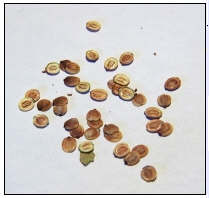
These photos were taken on 2 April 2009 when we sowed our parsnip seeds. It is important to choose a still day when sowing these seeds. The seeds are wind distributed so very light and easily blown away.
Parsnip seed does not keep and so you must buy new seed each year to have any chance of good germination.
Parsnips are in the ground for a long time - we are still harvesting parsnips sown last year, so this should be kept in mind when choosing a location for sowing. We leave our parsnips in the ground until we are ready to eat them. The flavour of the roots improve after they have been subjected to a frost as the frost turns the starch into sugars.
Most advice is to plant very early but there is no point in doing this if the ground is cold and wet as the seed will rot and so not germinate in these conditions.
Parsnip seeds are notoriously slow to germinate and some people prefer to pre-germinate them on damp kitchen paper but touch wood we have generally had reasonable success using the method explained below.
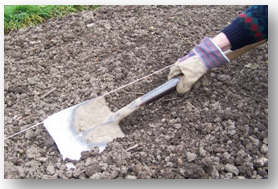
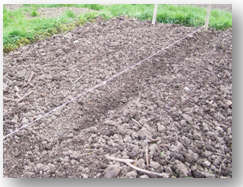
Parsnip seeds really need to be sown directly into the soil. Seeds sown directly into our soil don’t tend to germinate well so we firstly create a shallow trench.
A line of string is set out so that the trench is kept fairly straight – if seeds germinate in a straight line it makes weeding easier. The trench is about 8 cm or 3” deep.
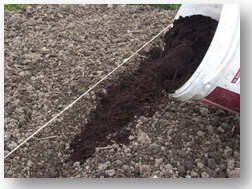
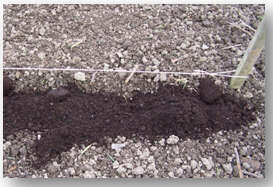
The trench is then filled with multi-purpose compost.
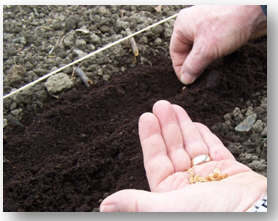
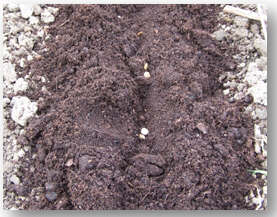
A shallow drill (about 1 cm or ½” deep) is then made in the compost trench and two parsnip seeds are placed at stations about 10 cm or 4” apart. Placing two at each station doubles the chance of at least one seed germinating at each station. If the soil is very dry then water the trench before sowing the seeds. Parsnip seeds need to been sown on a still day as the seeds are very light and easily blow away.
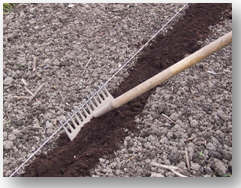
The back of a rake is used to cover the seeds with compost.
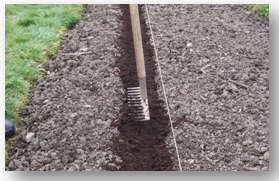
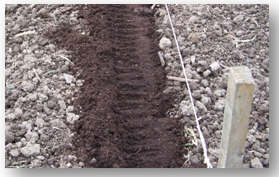
The rake is then used to tap down the soil.
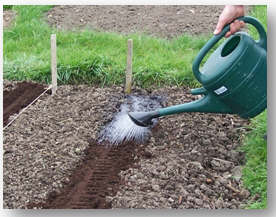
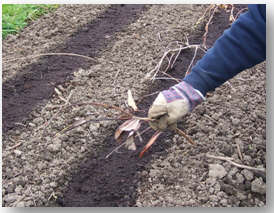
The compost must then be watered thoroughly. The compost will dry out fairly quickly in dry weather so will need to be watered frequently.
To protect the seeds and germinating seedlings from damage caused by animal paws or birds we place pieces of twig across the trenches.























